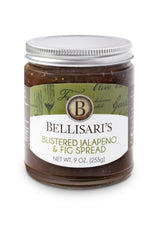
Finding the Right Oil for Your Recipe
When it comes to everyday cooking for my family, I try to balance flavor, health benefits, and price. One ingredient seems to stump me sometimes, though, and it is oil. When considering which oil to use for cooking, there’s a lot of misinformation out there. Healthwise, you need some fat in your diet; according to the American Heart Association, fat helps boost energy, support cell growth, protect your organs, keep your body warm, and aid in nutrient absorption and the manufacturing of hormones. Fortunately, oils can be a great source of these healthy fats but choosing the right one is key.
Cooking temperature is an important factor to consider when selecting your oils. Different oils have different smoke points. A smoke point refers to the amount of heat an oil can withstand before it begins to break down and burn. An oil’s smoke point is identifiable by smoke, a very unpleasant smell, and a burnt, bitter taste. Surpassing the smoke point of an oil will alter the taste and appearance of your dish, as well as compromise the nutritional value of the oil.
Low heat -- Any oil can be used at a low heat. Butter is the oil/fat with the lowest smoke point (approx. 300-350F), so if you intend to use it, sauté over low to moderate heat.
Moderate heat -- Most oils can withstand moderate heat. Olive oil is often recommended for its health benefits, but you have to remember that it has a relatively low smoke point compared to other oils (approx. 375F). Highly refined olive oils that are lighter in color, such as extra-light olive oil, can withstand more heat (up to 450F). As a rule, most light-colored oils are more refined and have higher smoke points. The refining process removes many of the particles and impurities that tend to burn, allowing the oil to withstand higher heat.
High heat -- In terms of pan-, stir- or deep-frying, a variety of oils are available to use at medium-high to high heats. Refined oils such as vegetable, canola, corn, grapeseed, safflower, and sunflower are all designated as high-heat oils, meaning they can withstand approximately 450F. Peanut oil is being used more these days because it has a slightly earthy and more interesting flavor than plain vegetable oil.
As far as flavor goes, think about what this oil/fat does in your recipe. If you're using oil to keep food from sticking during the cooking process, you should probably choose an oil that is light in flavor, such as vegetable, corn, canola, or grapeseed. If the flavor of the oil plays a role in the dish, you should opt for one with a distinguishable flavor, such as olive or peanut oil. There are also many oils available that are known only for their flavors and are not intended to be exposed to heat. These oils are often referred to as finishing oils. Examples are unrefined sesame oil, walnut, hazelnut, and truffle oil.
For a healthy diet, any fat should be consumed in moderation, but most oils are derivatives of plants (butter excluded) and are nutrient-rich. Olive oil has been the superstar oil touted for its health benefits and monounsaturated fats, known to lower blood pressure and bad cholesterol. Other monounsaturated oils include canola, peanut, and flaxseed. Flaxseed, walnut, canola, and hemp oil are also considered heart-friendly because they’re rich in omega-3 fatty acids.
Even though you may like the idea of cooking your French fries in sunflower or safflower oil, unfortunately many of these oils carry quite a price tag. You don’t want to use a bottle of expensive oil when a less-expensive one would have worked just as well or even better.
This Spicy Fig Spread and Shrimp Stir Fry recipe (https://bit.ly/2twfCAD) calls for “cooking oil,” so that means any of the lighter refined oils would be perfect for a quick stir fry on high heat. Whereas, this recipe for Manchego & Tomato Fennel Bruschetta (https://bit.ly/2IFiNAh) specifically calls for olive oil because the oil adds flavor to the dish. Whether it’s for frying or flavor, experiment with different oils and fats to see what works best in your recipes.






